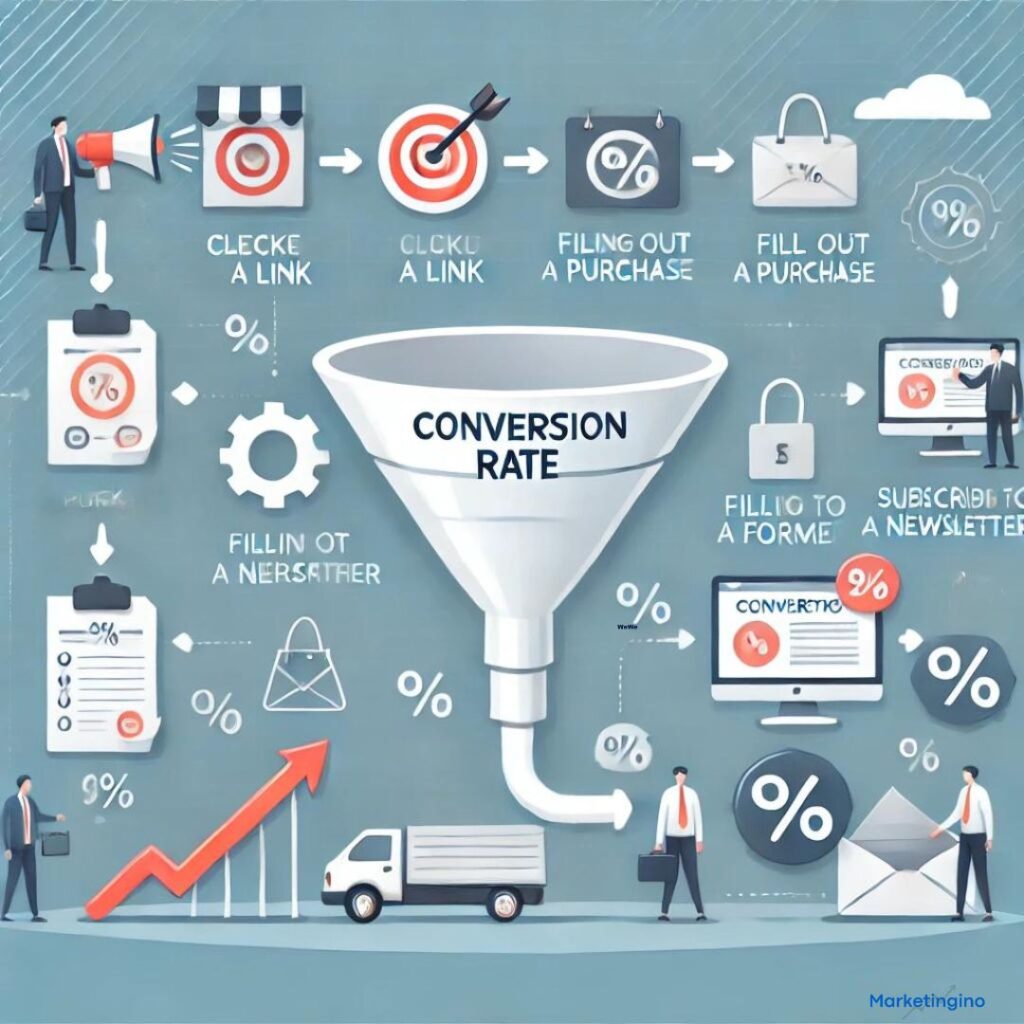In the realm of digital marketing and e-commerce, conversion rate is a critical metric that gauges the success of various strategies and initiatives. It represents the percentage of users or website visitors who complete a desired action, such as clicking on a link in an email or purchasing a product. Understanding and optimizing conversion rates is essential for businesses aiming to improve their performance and achieve their goals. This article delves into the concept of conversion rate, its importance, methods of calculation, and strategies for enhancement.
What Is Conversion Rate?
Conversion rate is a metric that indicates the proportion of users who take a specific desired action out of the total number of visitors or recipients. This action can vary depending on the business objectives and can include activities such as making a purchase, filling out a form, subscribing to a newsletter, or downloading an app. The conversion rate is expressed as a percentage and provides insight into the effectiveness of marketing campaigns, website design, and overall user experience.
Importance of Conversion Rate
1. Evaluating Marketing Effectiveness
Conversion rate is a direct measure of how well marketing efforts are converting potential customers into actual customers. High conversion rates indicate that the marketing strategies are resonating with the audience and driving the desired actions.
2. Maximizing Return on Investment (ROI)
By optimizing conversion rates, businesses can maximize their return on investment. A higher conversion rate means more value is being derived from the same amount of traffic or marketing spend, leading to better utilization of resources and increased profitability.
3. Enhancing User Experience
Conversion rates also reflect the quality of the user experience. A seamless and intuitive experience leads to higher conversion rates, indicating that users find it easy and compelling to take the desired action. Improving user experience can therefore directly impact business outcomes.
How to Calculate Conversion Rate
Calculating conversion rate is straightforward. The formula is:
Conversion Rate=(Number of Conversions/Total Number of Visitors)×100
For example, if a website receives 10,000 visitors in a month and 500 of them make a purchase, the conversion rate would be:
Conversion Rate=(500/10,000)×100=5%
Strategies for Optimizing Conversion Rates
1. Clear and Compelling Calls to Action (CTAs)
Effective CTAs are crucial for driving conversions. Ensure that your CTAs are prominently displayed, use action-oriented language, and clearly communicate the value proposition. For example, instead of a generic “Submit” button, use “Get Your Free Quote” or “Start Your Free Trial.”
2. Simplify the Conversion Process
The easier it is for users to complete the desired action, the higher the conversion rate will be. Simplify forms by reducing the number of fields, streamline the checkout process, and eliminate unnecessary steps that may cause friction.
3. Optimize Landing Pages
Landing pages play a significant role in conversions. Ensure that they are relevant to the ad or link that brought the user there, and that they clearly communicate the benefits of the desired action. Use persuasive copy, high-quality images, and testimonials to build trust and encourage conversions.
4. Personalize User Experience
Personalization can significantly boost conversion rates. Tailor content, offers, and recommendations based on user behavior and preferences. Personalized experiences make users feel valued and more likely to take the desired action.
5. A/B Testing
A/B testing involves creating two versions of a webpage or element and testing them against each other to see which performs better. Test different headlines, images, CTAs, and layouts to identify what resonates most with your audience and drives higher conversions.
6. Build Trust and Credibility
Trust is a crucial factor in conversion. Use trust badges, secure payment icons, customer reviews, and testimonials to build credibility. Ensure that your website is secure and that users feel confident in taking the desired action.
Conclusion
Conversion rate is a vital metric for any business looking to measure and improve the effectiveness of their marketing and user experience strategies. By understanding the importance of conversion rates and implementing strategies to optimize them, businesses can achieve higher levels of engagement, better resource utilization, and increased profitability. Whether it’s making a purchase, subscribing to a newsletter, or any other desired action, focusing on improving conversion rates is key to driving business success.




